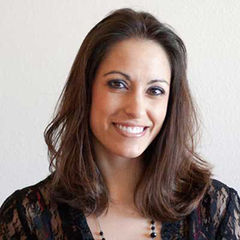How do you define wellness?
Of course, wellness can be described and defined in many ways. Merriam-Webster refers to wellness as “the state of being in good health, especially as an actively pursued goal.” The Global Wellness Institute defines wellness as “the active pursuit of activities, choices, and lifestyles that lead to a state of holistic health” (Global Wellness Institute, 2022), while the National Wellness Institute considers wellness to be “an active process through which people become aware of, and make choices toward, a more successful existence” (National Wellness Institute, 2022).
The verbiage used to define what wellness is as a concept or state of being may differ between sources and organizations, but there are common threads tying each definition together: a process, the active pursuit and lifestyle choices.
The Many Dimensions of Wellness
Wellness is a concept that means something different to everyone. It is fluid and requires a continuous commitment and renewal of that commitment. Wellness is not only described differently by various sources, but the dimensions which make up one’s personal picture of wellness are also diverse.
Dr. Bill Hettler, cofounder of the National Wellness Institute, first described wellness as a six-sided model in 1976. The dimensions originally included were emotional, occupational, physical, social, intellectual and spiritual (NWI). You can find a full description of each of these six dimensions here. Though other models exist and include additional dimensions (financial and environmental, for example), there is common ground between all: to be well or achieve optional wellness requires a balance or harmony between multiple facets of human existence that transcend the physical body (or health).
Every wellness model appears to acknowledge (and respect) the interconnectedness of each component, regardless of how those components are labeled or defined. For example, when one area suffers, all remaining dimensions are negatively impacted. The reverse is true as well. When one area is fulfilled, all other components benefit. Wellness is a holistic state or pursuit that considers the complexity of human nature and needs.
Paint Your Picture of Wellness
Fortunately, wellness, like art, is subjective; wellness is a picture we can paint for ourselves with respect to our individual lives and the areas we deem valuable and consider priorities. Further, how we imagine wellness on an individual level varies from how our family members, friends and colleagues see their respective pictures of wellness.
So, where do you begin? How do you prepare to paint your personal picture of wellness? First, identify what it is you already have that relates to the dimensions that are important to you. Then, evaluate how “colorful” or fulfilled each area is. Finally, define what elements you need to complete your picture. For example, what “colors” are missing? What actions will you take to add those missing colors or pieces?
Before painting your masterpiece, begin by reflecting on and addressing these five prompts:
- When I think about wellness, what images, symbols, or words come to mind? For example, when I think about wellness, the infinity symbol comes to mind. I view wellness as a process that we commit to at the beginning of every day. By asking yourself this question, your most valued dimensions may emerge based on the words and images that enter your mind.
- When I think about my life in terms of work, home and personal, how balanced do I feel? What barriers affect me in achieving my desired level of balance?
- When I think about joy, what things, activities, people or places bring me joy?
- What occupies my headspace daily? Here you may identify what detracts from your joy.
- When I think about myself as a whole person—mind, body, spirit—what area appears lacking? Why?
After taking time to reflect on these questions, you can use a checklist or table method to begin illustrating what your current picture of wellness includes and what you hope to add to complete the picture.
Let’s look at an example of how you would do this for each dimension or “color” related to your optimal picture of wellness. To personalize this process and offer something to you to connect with, I used my own example of one of my priority dimensions, the intellectual dimension.
Intellectual Dimension Inventory
To me, this dimension includes four primary areas or “shades.” (Note: Areas that comprise this dimension may look different for you, and that’s O.K.)
- Interests and hobbies
- Continuing education
- Leisure learning
- Networking
Using a table or grid like the one below, I evaluated the intellectual dimension of my wellness picture.
|
Area |
Current Actions |
Current Needs/Goals |
Resources to Address Needs |
|
Interests and hobbies |
· Scrapbooking · Writing · Cooking |
None that I see currently |
N/A |
|
Continuing education |
· Attending webinars · Reading professional journals · Enrolled in two classes |
None that I see currently |
N/A |
|
Leisure learning |
None |
To read/listen to a non-exercise science related book for fun |
Audible Bookstore |
|
Networking |
· Highly active in social media platforms and professional networking sites |
To attend a conference this summer to expand my professional network and learn new information |
Professional organizations |
From this example, it looks like my intellectual dimension (or color) and the areas (or shades) I relate to are mostly fulfilled (or colorful) except for leisure time learning and a desire to network more consistently this summer. I identified actions I can take and resources to support those actions.
Implement this exercise for each of your priority dimensions. Once you do, you can narrow down an area of focus (i.e., one dimension). Address the area or dimension you feel is the most lacking or the least colorful. As with goals, it’s not useful to pursue all goals at one time. Small steps lead to greater progress and satisfaction and, the most critical element of life, joy.
However you define it, view it, or express it, wellness is as individualized as it is multifaceted. It’s a process that is continually renewed through the daily habits we practice and the choices we make. It will shift over time and each “color” can fade and be brightened once again. The key is developing a sense of awareness about what you need and desire for your picture to be both complete and optimal for you.




 by
by 










 by
by